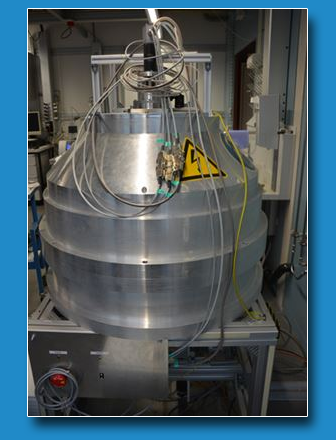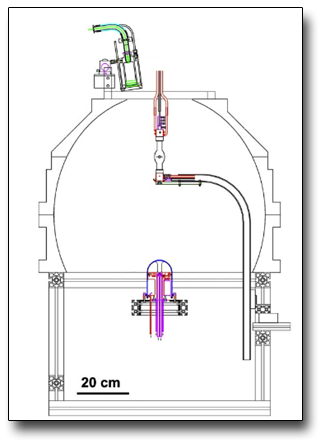
The system is equipped with a high-power xenon arc lamp (1 kW) whose radiant power is redirected by an ellipsoidal reflector. It is designed to deliver an intense thermal radiation that simulate the heat transfer characteristics of highly concentrating solar systems.
Due to its high reflectivity, aluminum was chosen as material for the reflector. The reflector is composed by different three pieces with diamond machined inner surfaces. According to the manufacturer, the surface roughness is below 15 nm and the accuracy of the contour 2 μm for every 100 mm.
The system provides intensities required for concentrating solar power (CSP) testing, ranging from 1 to 5000 suns (on small spots of 5 mm diameter). It can also be used as a furnace that allows fast heating of samples that are placed on the proximity of the second focus of the reflector.
TECHNICAL SPECIFICATIONS
-
1 kW Xe lamp;
-
Capability to concentrate radiation up to 5000 suns for concentrating solar power measurements.
CASE STUDIES
PSI’s 1 kW imaging furnace—A tool for high-temperature chemical reactivity studies
A new experiment has been installed to conduct studies at temperatures as high as 2500 K on chemical reactions that involve solids or melts and the release of condensable gases. The sample is radiatively heated by a 1 kW xenon short arc lamp placed in the upper focus of a vertically oriented ellipsoid of revolution. The optimal optical configuration has been determined by a Monte-Carlo Ray tracing method. Several methods to machine the reflector have been evaluated by experimentally determining the optical quality of the surface of plane test pieces. In the imaging furnace the sample is placed on a water-cooled support and heated by the concentrated radiation. This arrangement allows for fast heating and impedes the reaction of the sample with crucible material.
C. Guesdon et al., Solar energy 80 (2006) 1344-1348


 English (UK)
English (UK)  Italiano (Italia)
Italiano (Italia)